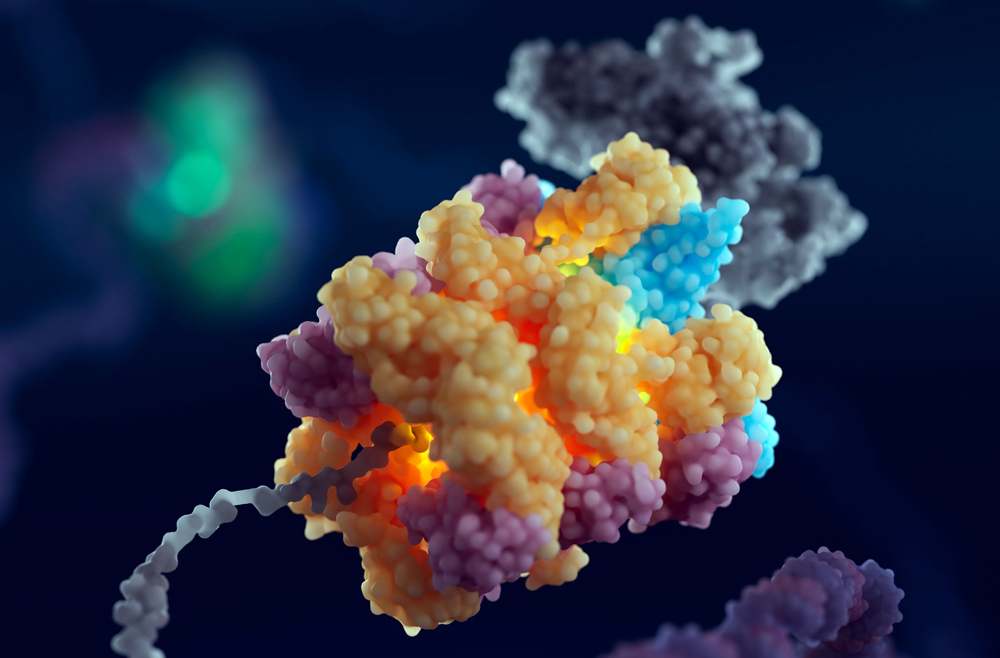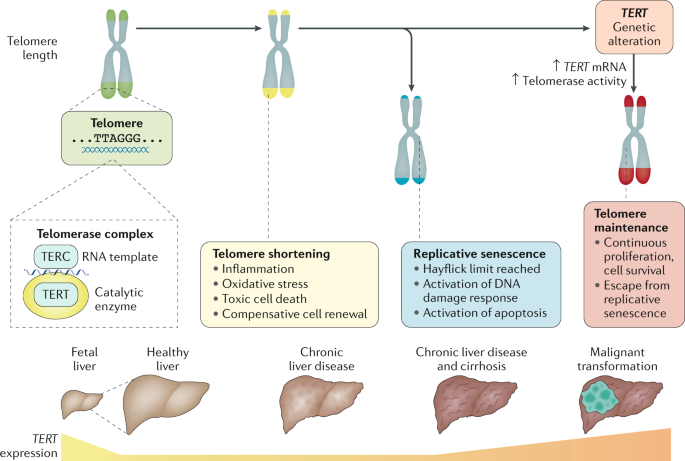DNA Replication, Recombination, and Repair
DNA Replication, Recombination, and Repair

Objectives for this lecture
- Describe how DNA replication works: fork progression and proteins involved.
- Detail the ‘end-replication’ problem.
- Explain types of and repairing of damaged DNA.
DNA Replication and Chemotherapy
Because tumor cells replicate at higher rates than most normal tissues, much chemotherapy is directed at inhibiting DNA replication. Cells that are actively dividing are more sensitive to these drugs than quiescent cells; this provides a therapeutic window. In addition to rapidly dividing cancer cells, the targets of chemotherapy, there are normal but rapidly dividing cells in the intestinal tract, bone marrow, and hair follicles; the sensitivity of these rapidly dividing normal cells explains many of the limiting side effects of chemotherapy.
Semiconservative DNA Synthesis
The two parental strands separate, and each serves as a template for the synthesis of a complementary daughter strand. Therefore, the two daughter duplexes each have one parental strand and one newly synthesized strand. This is referred to as semiconservative DNA synthesis.

Requirements for DNA Replication
- Template: Provides sequence information.
- Primer: Provides free 3′-OH to which nucleotides are added.
- Precursors: 5′-Deoxynucleoside triphosphates (5′-dNTPs).
- Enzymes: DNA polymerases, sliding clamps, helicases, primases, single-stranded DNA-binding proteins, nucleases, ligases.

Mechanism of DNA Replication
DNA polymerase adds nucleotides to a primer that is hydrogen-bonded to a template strand. The template provides the information on which nucleotide to add, while the primer provides a free 3′-hydroxyl group to which nucleotides can be added. The two strands of DNA run antiparallel to each other.
The primer's 3′-OH group acts as a nucleophile, attacking the α-phosphate of the incoming nucleoside triphosphate. This results in the formation of a new phosphodiester bond, elongating the primer by one nucleotide and releasing pyrophosphate.

Proofreading
DNA polymerases can fix some mistakes via proofreading. When an incorrect nucleotide is added, the resulting mismatch is a poor substrate for further nucleotide addition. The enzyme's 3′ to 5′ exonuclease activity removes the mismatch, allowing the correct nucleotide to be incorporated.

DNA Polymerases
- Pol α/primase: Priming, synthesis of initial Okazaki fragments.
- Pol δ: Synthesis of most Okazaki fragments, gap filling after primer removal.
- Pol ε: Synthesis of the continuous (leading) strand.
The Replication Fork
At the replication fork, helicase is needed to separate the parental strands and allow the fork to progress. Single-stranded DNA-binding proteins (SSB) keep the strands apart. The leading strand is synthesized continuously, while the lagging strand is synthesized discontinuously in short pieces called Okazaki fragments.
Formation of Okazaki Fragments
- Primase synthesizes an RNA primer.
- DNA polymerase extends the primer, synthesizing an Okazaki fragment.
- DNA polymerase fills the gap after removing the RNA primer.
- DNA ligase connects the Okazaki fragments by sealing the sugar-phosphate backbone.
Topoisomerases
Topoisomerases are enzymes that resolve topological issues by creating transient breaks in the DNA. Topoisomerase I forms a phosphodiester bond with the DNA, allowing it to unwind and preventing supercoiling. Antibiotics like ciprofloxacin target bacterial topoisomerases.
Sliding Clamps and Clamp Loaders
Sliding clamps increase the processivity of DNA polymerases by anchoring them to the DNA. Clamp loaders assist in assembling sliding clamps onto DNA.

The End-Replication Problem
End-replication problem arises because DNA polymerase cannot replicate the very ends (telomeres) of linear chromosomes. Telomerase solves this by adding telomere repeats to the ends, allowing for complete replication.
Homologous Recombination
Homologous recombination is a process that enables the repair of double-strand breaks and creates genetic diversity. The Holliday model describes how strand invasion and branch migration lead to the formation of crossover points, which are then resolved to restore continuous DNA strands.
DNA Damage and Repair
Types of Damage
- Deamination: Converts cytosine to uracil.
- Depurination: Removal of a purine base, leaving an abasic site.
- Thymine dimers[/strong>: Caused by UV light, leading to cross-linking of adjacent thymines.
Excision Repair
- Base Excision Repair (BER): Involves removal of damaged bases by glycosylases, followed by gap filling by DNA polymerase and ligation by DNA ligase.
- Nucleotide Excision Repair (NER): Removal of oligonucleotides containing the damaged bases, followed by DNA polymerase filling the gap and sealing by DNA ligase.
Specific Diseases
- Xeroderma Pigmentosum (XP): Caused by defects in NER, leading to high sensitivity to UV light and a predisposition to skin cancers.
Mismatch Repair
Detects and repairs mismatches that escape proofreading during DNA replication. This system distinguishes the newly synthesized strand by the absence of methylation.

Translesion DNA Synthesis
Specialized DNA polymerases bypass lesions in the template, allowing replication to continue at the cost of increased mutation rates due to their lack of proofreading activity.

Double-strand Break Repair
- Non-Homologous End Joining (NHEJ): Direct ligation of blunt ends; error-prone but fast.
- Homologous Recombination (HR): Uses homologous sequences to accurately repair breaks; precise but restricted to certain cell cycle phases.
Conclusion
Understanding the mechanisms of DNA replication, recombination, and repair helps in the development of therapeutic strategies and provides insights into various genetic diseases.